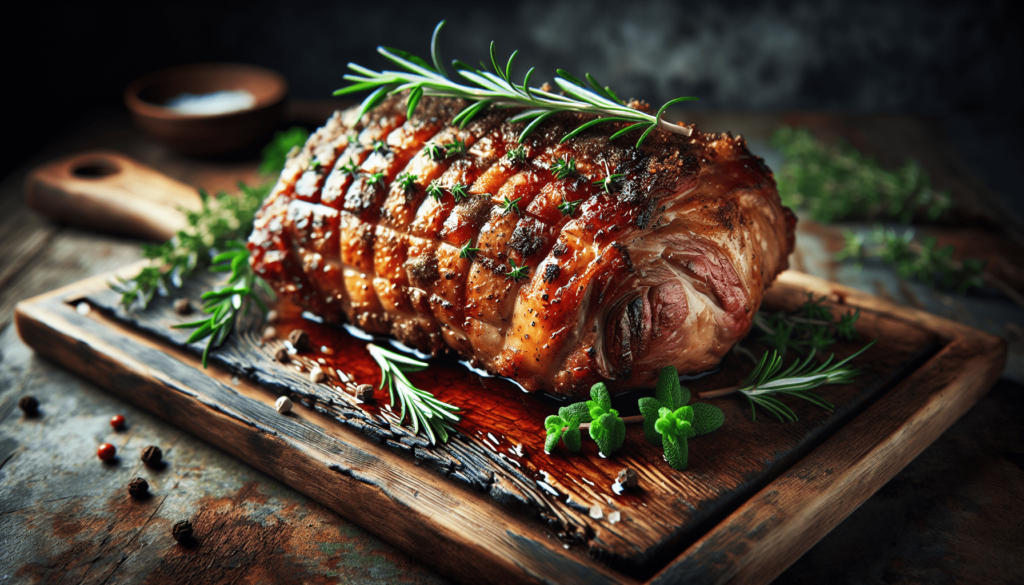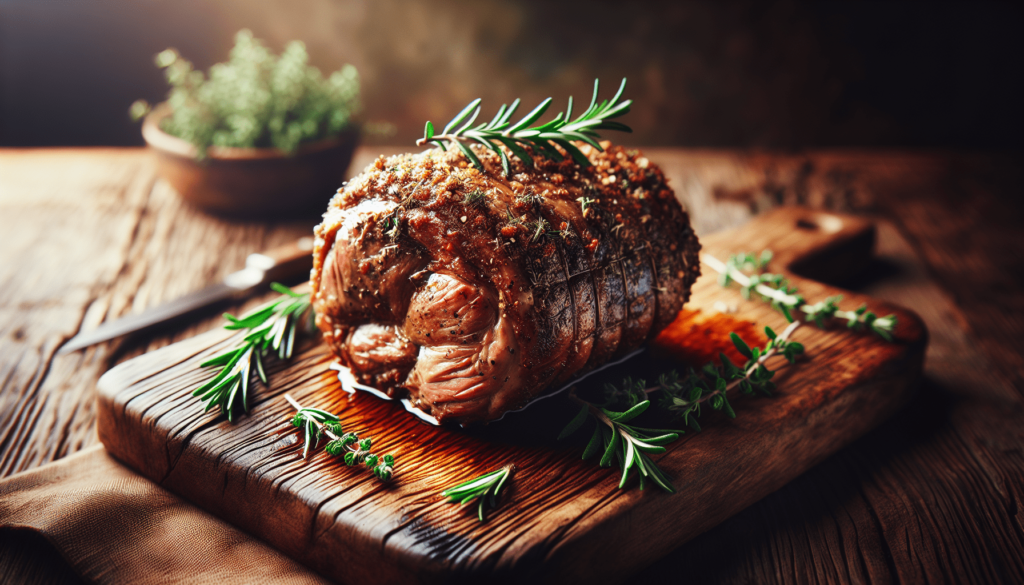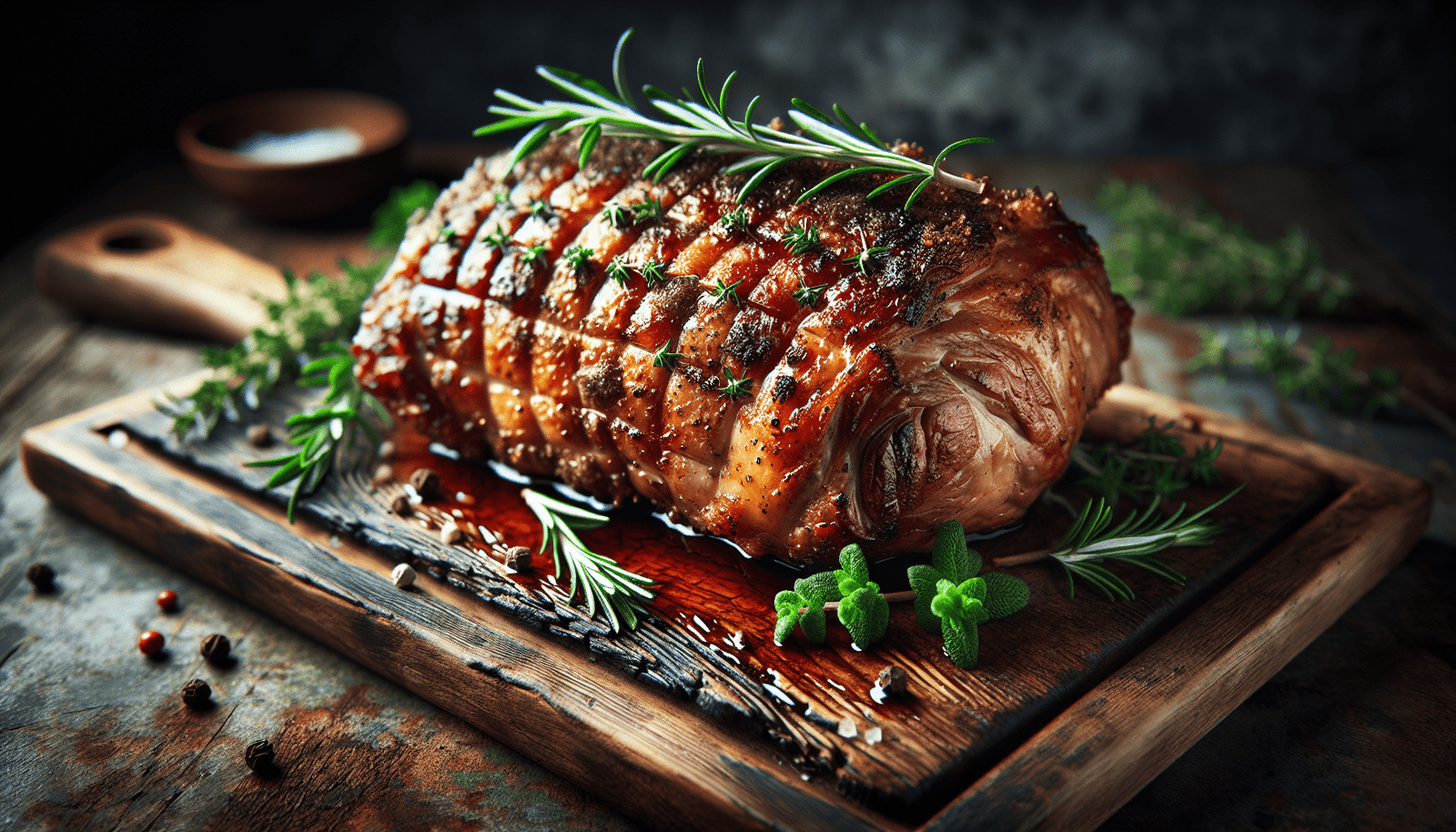Have you ever wandered into the meat section of your local grocery store or butcher shop, scanned the many selections, and wondered what to do with a lamb shoulder? This versatile cut of meat, rich with flavor and culinary potential, might just become your new favorite ingredient. Here, you’ll find everything you need to know about lamb shoulder, from understanding its unique characteristics to discovering a recipe that will make every meal unforgettable.
Understanding Lamb Shoulder
Lamb shoulder is a cut of meat from the front section of a lamb. It’s known for being flavorful, tender when cooked properly, and surprisingly versatile. Whether slow-cooked, roasted, or braised, lamb shoulder can offer a rich and satisfying meal that’s perfect for both casual dinners and festive gatherings.
Characteristics of Lamb Shoulder
Unlike more expensive cuts like the rack of lamb or loin, the shoulder has more connective tissue and muscle. This means it benefits from slow cooking methods that break down these tissues, rendering the meat tender and juicy. The marbling within the muscle ensures a depth of flavor that’s both robust and comforting.
Why Choose Lamb Shoulder?
Many choose lamb shoulder for its deep flavor and its adaptability to a variety of cooking techniques. Not only is it more affordable than other cuts, but it also retains moisture well, making it an excellent choice for low and slow cooking. Furthermore, lamb shoulder can be a sustainable choice; using the whole animal reduces waste and often supports more ethical farming practices.
Cooking Techniques for Lamb Shoulder
When it comes to cooking lamb shoulder, you have several methods at your disposal, each offering its own unique taste and texture. The key is patience; lamb shoulder shows its best properties when given time to cook thoroughly.
Slow Roasting
Slow roasting is perhaps the most popular method. This technique allows the meat to cook evenly while tenderizing and bringing out its inherent flavors. By roasting at a lower temperature over several hours, the connective tissues dissolve, and the fat melts into the meat, producing a delectable final product.
Braising
Braising is another excellent technique for lamb shoulder. This involves searing the meat first to enhance flavor, then cooking it slowly in a closed environment with liquid. The process infuses the meat with additional flavors from herbs, spices, and any added liquids, such as broth or wine, creating a complex and richly flavored dish.
Grilling and Smoking
While not as common, grilling or smoking lamb shoulder can provide a delicious alternative. These methods are perfect for warmer weather cookouts. By marinating the shoulder and then applying a slow and even cook on the grill or in a smoker, you can achieve a tender and flavorful result that boasts a delightful smokiness.

Selecting the Right Lamb Shoulder
When choosing a lamb shoulder, there are a few things you should consider to ensure you’re getting the best cut for your cooking needs.
Bone-in or Boneless
Lamb shoulders can be purchased bone-in or boneless. A bone-in shoulder usually offers a richer flavor due to the marrow in the bone, which infuses the meat during cooking. Boneless cuts, however, can be easier to handle and carve, making them desirable for certain recipes or presentations.
Freshness and Quality
Look for a cut that is fresh, with a healthy pink color and a good amount of marbling. The fat should be creamy white, and the meat should be firm to the touch. Whenever possible, opt for lamb that is locally sourced or grass-fed, as these options often guarantee better quality and flavor.
Size and Weight
Consider how many people you’re serving when selecting a lamb shoulder. A typical shoulder will weigh between 3 to 6 pounds. For a bone-in lamb shoulder, plan for about 1 pound per person, while for boneless, 3/4 of a pound per person is usually sufficient.
Preparing Lamb Shoulder for Cooking
Proper preparation is crucial to achieving the best flavors and textures. Here are some steps to follow to ensure your lamb shoulder is ready for cooking.
Trimming and Tying
You may need to trim some excess fat from the lamb shoulder, especially if there’s a particularly thick layer. Leaving a thin layer of fat, however, is beneficial as it helps keep the meat moist during cooking. If using a boneless cut, rolling and tying the meat can help it cook evenly and make for a more aesthetically pleasing presentation once sliced.
Marinating
Although not always necessary, marinating lamb shoulder can infuse additional flavors and tenderize the meat. Ingredients like garlic, rosemary, olive oil, lemon, and yogurt make excellent bases for a marinade. Allow the lamb to marinate for at least a few hours, or preferably overnight, in the refrigerator for the best results.
Bringing to Room Temperature
Before cooking, let your lamb shoulder come to room temperature. This ensures even cooking and helps the meat to retain its moisture. Simply take it out of the refrigerator about an hour before you plan to start cooking.

A Classic Recipe: Slow-Roasted Lamb Shoulder
To showcase lamb shoulder at its finest, here’s a classic recipe that emphasizes its rich flavor and tender texture.
Ingredients
- 5-pound lamb shoulder (bone-in)
- 2 tablespoons olive oil
- 5 cloves garlic, minced
- 1 tablespoon fresh rosemary, chopped
- 1 tablespoon fresh thyme, chopped
- Salt and pepper to taste
- 1 cup chicken or lamb broth
- 1 cup red wine (optional)
Instructions
-
Prepare the Lamb: If not already done, trim excess fat from the shoulder. In a small bowl, mix the olive oil, minced garlic, rosemary, thyme, salt, and pepper. Rub this mixture all over the lamb.
-
Sear the Lamb: On the stovetop, heat a roasting pan over medium-high heat. Sear the lamb shoulder on all sides until browned, about 3-5 minutes per side.
-
Roast the Lamb: Place the lamb in the roasting pan, add the broth and wine if using. Cover the pan tightly with aluminum foil or a lid. Place it in the oven.
-
Slow Roast: Allow the lamb to roast for about 4 hours, checking every hour or so. The lamb is done when it is fork-tender and easily pulls apart.
-
Resting: Remove the lamb from the oven and let it rest, covered, for at least 15 minutes before carving.
-
Serve: Carve the lamb shoulder and serve with your choice of sides. Enjoy the complex flavors and tender meat alongside roasted vegetables or a fresh salad.
Pairing Lamb Shoulder with Sides and Drinks
To truly enhance your lamb shoulder feast, pair it with complementary sides and drinks that elevate the flavors.
Recommended Sides
- Roasted Vegetables: Potatoes, carrots, and parsnips roasted in the lamb’s juices make a perfect side.
- Minted Peas: A traditional partner to lamb, minted peas add freshness and color to your plate.
- Grilled Asparagus: Lightly griddled asparagus spears provide a lovely textural contrast.
Ideal Drinks
- Red Wine: A robust red wine like a Cabernet Sauvignon or Syrah pairs beautifully with lamb shoulder.
- Craft Beer: If you prefer beer, a rich amber ale or stout can complement the meat’s depth of flavor.
- Non-Alcoholic: A sparkling water infused with citrus or mint can be a refreshing palate cleanser.
Key Tips for Cooking Lamb Shoulder
These handy tips can help ensure your success when cooking this delectable cut of meat.
Patience is Key
Whether you’re roasting or braising, patience is essential. Allow the meat to cook slowly and surely, letting the heat and time work their magic.
Season Generously
Lamb shoulder thrives with seasoning. Be generous with herbs, spices, salt, and pepper to highlight the cut’s naturally savory taste.
Rest After Cooking
After cooking, always let your lamb shoulder rest. This allows juices to reabsorb into the meat, enhancing the tenderness and flavor.
Variations with Lamb Shoulder
Though a classic roast is always delightful, there are many ways to adapt lamb shoulder to fit different cuisines and occasions.
Mediterranean Lamb Shoulder
Marinate your lamb with yogurt, lemon, and oregano for a Greek twist. Serve with olives, feta, and pita bread for a Mediterranean feast.
Moroccan-inspired Lamb Shoulder
Infuse the lamb with flavors of cumin, coriander, cinnamon, and saffron. Serve with couscous, dried fruits, and nuts for an exotic take.
Indian-style Lamb Shoulder
Use garam masala, turmeric, and coriander powders for an Indian flair. Pair it with basmati rice or naan for an aromatic experience.
Wrapping Up: The Versatility of Lamb Shoulder
Lamb shoulder is an exceptional cut for those looking to explore the realms of flavor and texture. Its adaptability across cuisines and cooking methods ensures that it can suit a wide variety of tastes and occasions. With the right preparation and careful cooking, lamb shoulder can transform any meal into a culinary delight. Whether you’re sticking to a classic slow-roast or experimenting with global flavors, this cut offers endless possibilities for delicious creations.
Some of the links on this site are affiliate links, which means I may earn a small commission if you click on them and make a purchase, at no additional cost to you. As an Amazon Associate, I earn from qualifying purchases.



